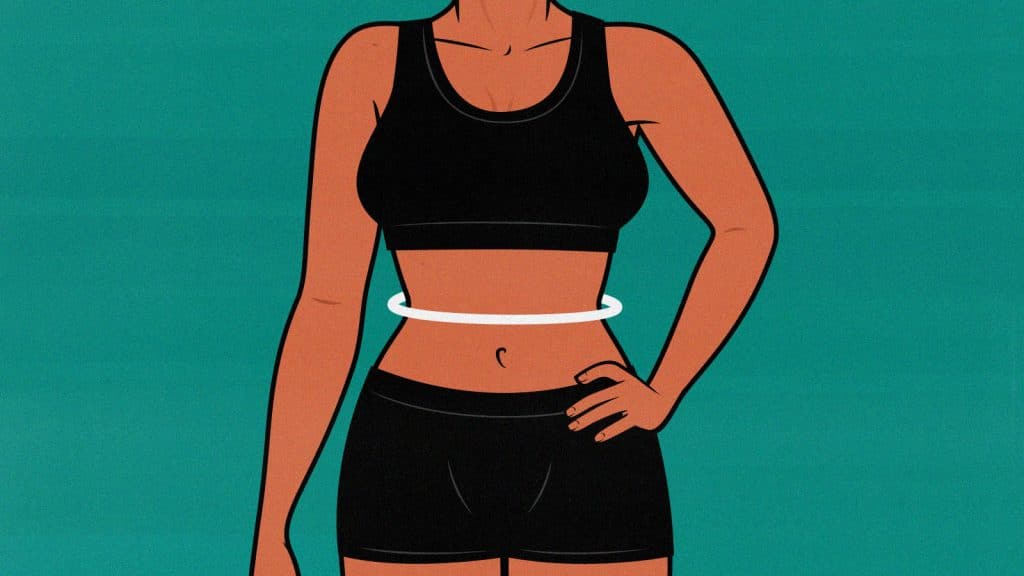
How to Get a Smaller Waist (With Before/After Photos)
The most obvious way to get a smaller waist is to lose fat overall. As you lose weight, some of that weight loss will be fat loss, and some of that fat loss will come from your waist. But we can do much better than that..
Have you heard of spot reduction? It’s the idea that you can burn body fat in a specific area by targeting it with your training. For example, to burn belly fat, you’d train your abs: sit-ups, crunches, and so on.
It doesn’t work. The evidence is clear. There aren’t any specific waist-slimming exercises (study, study, study, study). In fact, focusing specifically on training your abs would cause those muscles to grow proportionally more than your other muscles, giving you a larger waistline. That wouldn’t be unhealthy, but it’s something to keep in mind if you’re specifically after a smaller waist.
And so, understandably, that leads most people to assume they can’t specifically target the belly fat that would make their waists smaller. But it’s actually the opposite: no matter what area you try to target, you always burn proportionally more belly fat.
More squats? Smaller waist.
More running? Smaller waist.
Yoga, pilates, spin class? Smaller waist.
It can work surprisingly well, too.
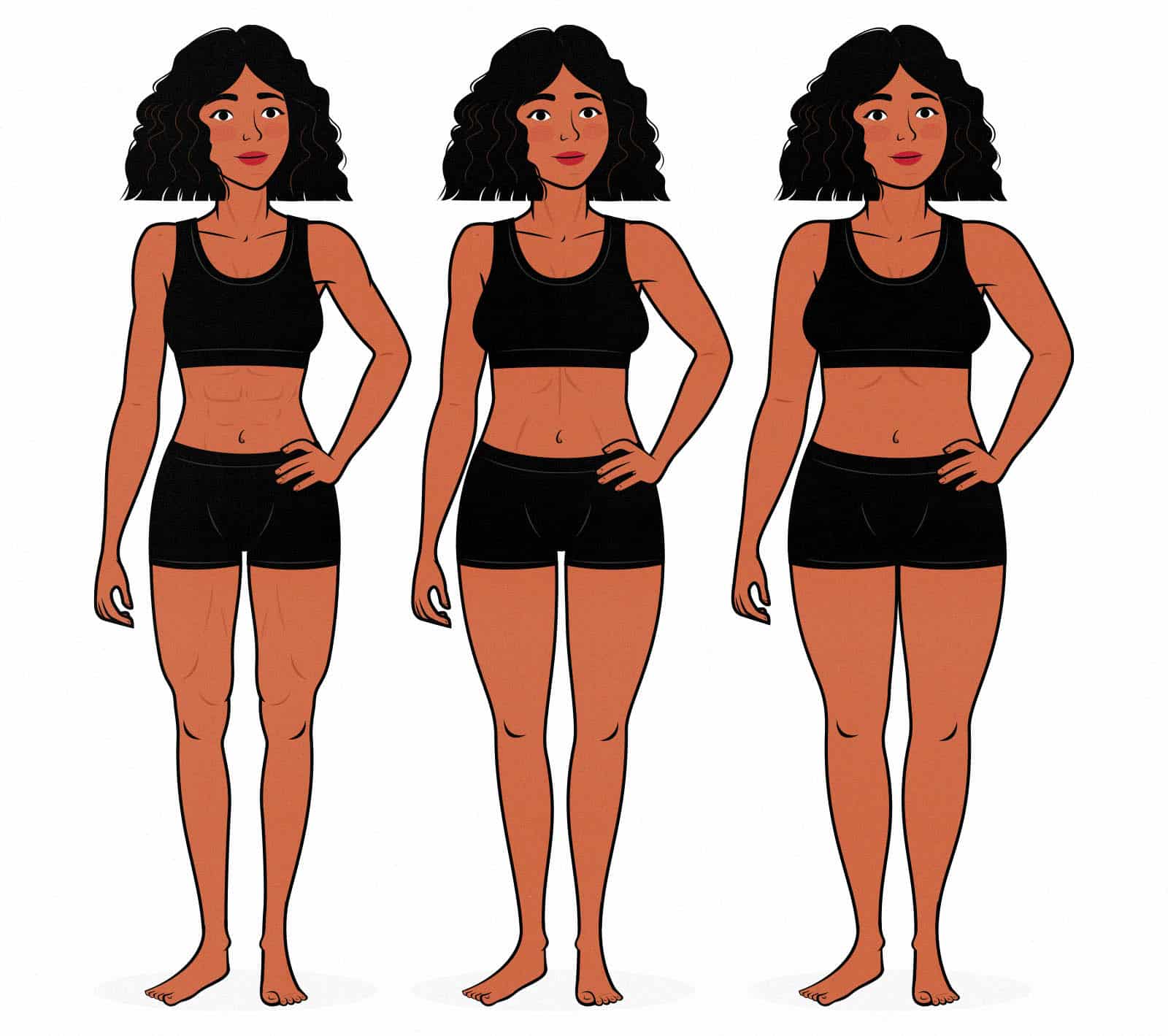
Visceral Belly Fat
The main type of fat that makes your waist bigger is visceral fat. It’s the fat underneath your abs, surrounding your organs. And when you have too much, it causes diabetes, heart disease, and inflammation.
It probably isn’t a coincidence that most people intuitively want to get rid of this unhealthy type of fat. That’s probably one of the reasons why having a small waist looks so good—because it signals better health. That’s true for both men and women.
The fat you store in other parts of your body doesn’t really cause health problems. It isn’t unhealthy to have a bigger butt, or bigger boobs, or thicker thighs. People don’t really tend to mind that sort of fat as much. It’s often quite attractive, especially on women.
This brings up an important point about liposuction. It removes the wrong type of fat. Even if you get liposuction specifically to remove belly fat, it will suck up the fat on top of your abs, not underneath your abs. That’s why liposuction doesn’t really come along with any health benefits. It also can’t get your waist all that small.
How Exercise Affects Belly Fat
Exercise is incredibly good at shrinking your waist. Visceral fat is especially well vascularized, which means that when you do physical activity of any kind—lifting or cardio—you’ll burn proportionally more of it.
Let’s put some numbers to it. Researchers divided 82 overweight adults with diabetes into four groups for sixteen weeks (study):
- Control group: Their body composition stayed about the same.
- Calorie deficit group: They lost 1.5 lbs (0.7 kg) of lean mass, dropped 4% body fat, and burned 666 mL of visceral fat.
- Calorie deficit with 1 lifting and 2 cardio workouts (150 minutes of exercise per week): They lost 1.1 lbs (0.5 kg) of lean mass, dropped 6% body fat, and burned 1,264 mL of visceral fat.
- Calorie deficit plus 2 lifting and 4 cardio workouts (300 minutes of exercise per week): They maintained their lean mass, dropped 8% body fat, and burned 1,786 mL of visceral fat.
The reason they were studying overweight people with diabetes is that losing visceral fat improves insulin sensitivity and beta-cell function, reversing diabetes (study, study, study). It’s also one of the most effective ways to reduce inflammation (study) and improve metabolic health (study).
The first thing to notice is that exercising preserved lean mass and accelerated fat loss, even though the participants were all instructed to eat the same fat-loss diets:
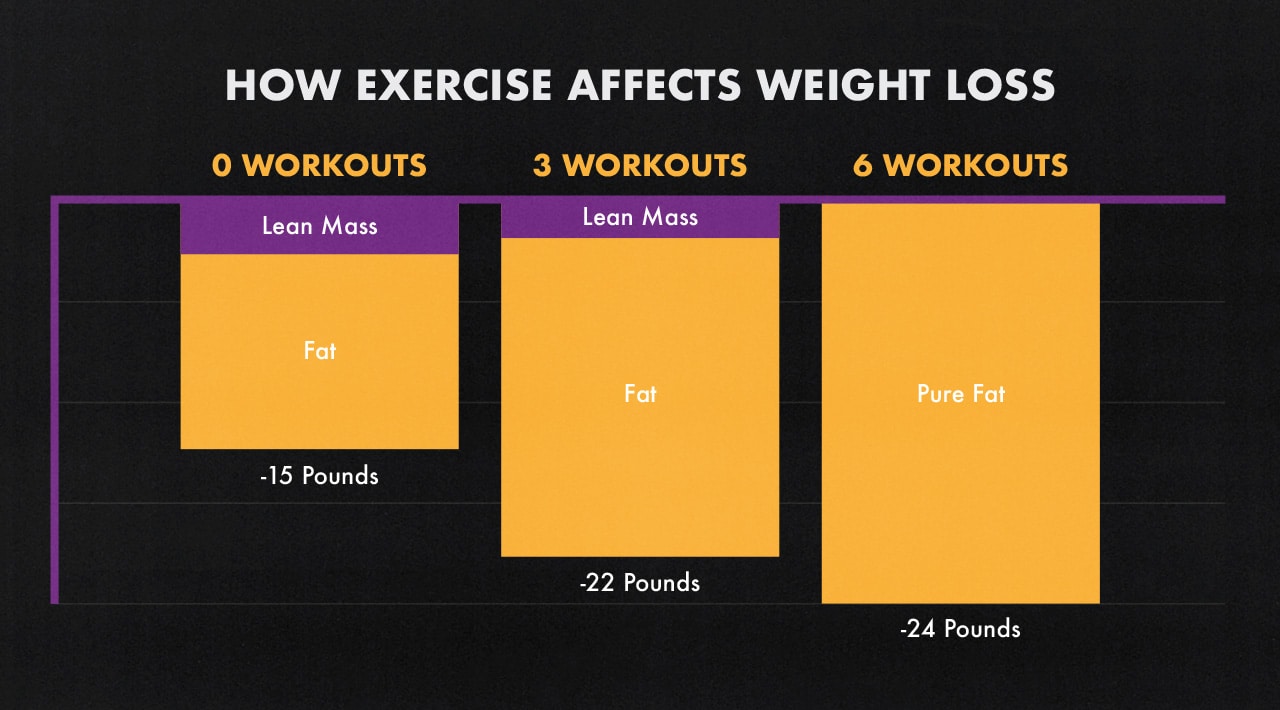
What’s more interesting is that adding three workouts to the calorie deficit increased fat loss by 50%, but there was a 100% increase in visceral fat loss. Bumping that up to 6 workouts increased overall fat loss by another 20%, but burned 50% more visceral fat.
So, lifting weights and doing cardio burns more fat, and it also causes proportionally more of that fat to come from your belly, shrinking your waistline.
The fitness improvements were crazy, too! Exercising three times per week improved the participants’ VO2 max by 6. Exercising six times per week improved their VO2 max by 10!
Those are life-changing improvements. If they even just maintain those improvements, that would be enough to add almost a decade to their lifespans. And imagine all of the extra energy they have as they go about their days.
You Can Shrink Your Waist Without Losing Weight
Your waist will shrink the fastest if you combine weight training, cardio, and weight loss. But you don’t necessarily need the weight loss, especially if you’re an overweight or skinny-fat beginner (study). Exercising can stimulate muscle growth and burn visceral fat even if you aren’t losing weight:
- Hypertrophy training is the most powerful way to stimulate muscle growth, which tends to result in simultaneous muscle growth and fat loss, including visceral fat loss (study). Here’s a good beginner hypertrophy workout you can start with.
- Cardio doesn’t stimulate much muscle growth, but it’s the best way to get fitter, and it’s also the most powerful way to burn visceral fat, making it ideal for getting a smaller waist (study). Here’s a beginner cardio guide.
When you combine both types of exercise, the effect is incredibly strong. You can lose inches off your waist while adding around your hips and shoulders, especially when you’re a beginner with plenty of fat to lose and muscle to build:
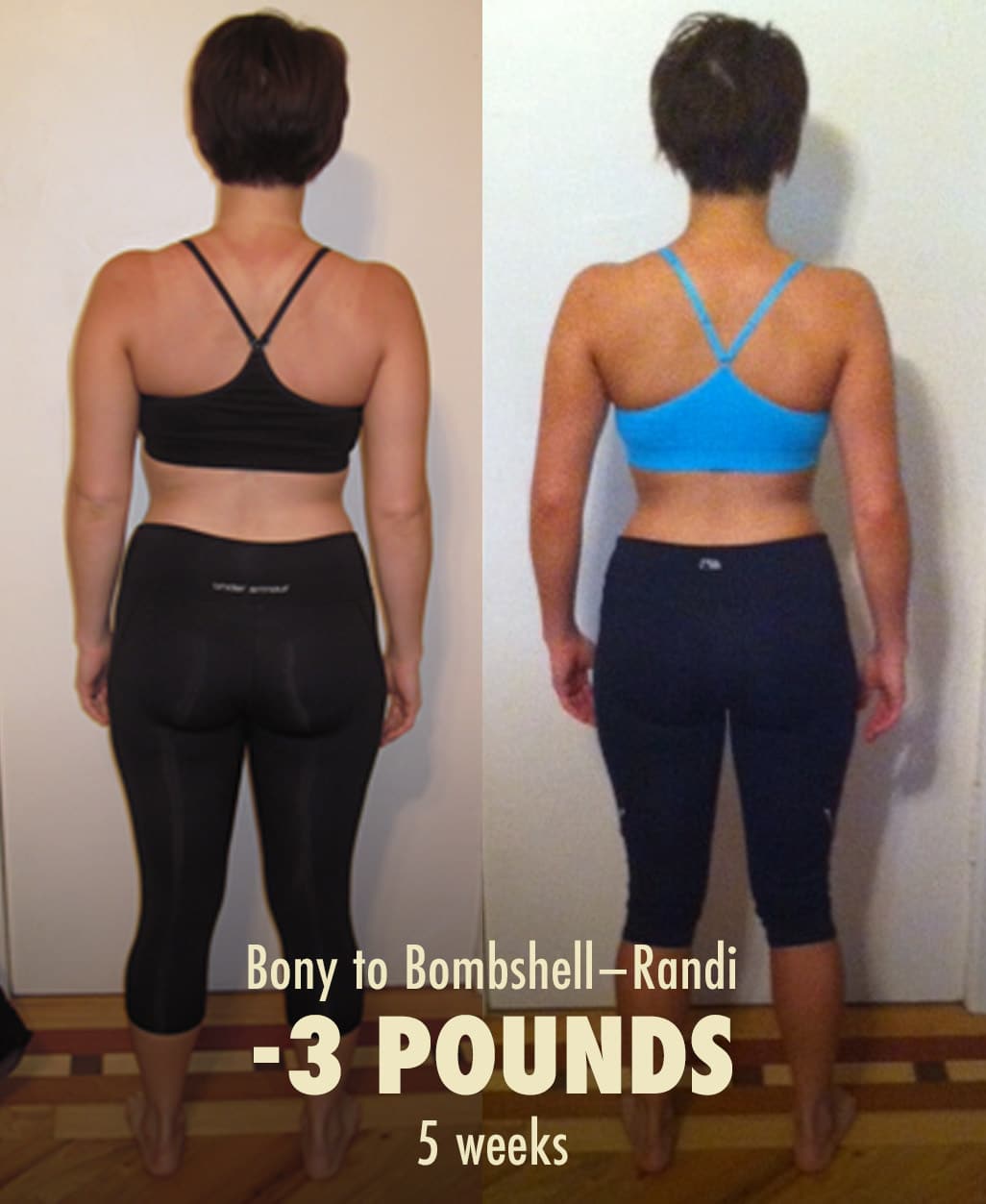
This is Randi’s first photo update while doing the Bony to Bombshell Program. We check in on progress photos and measurements every five weeks to make sure things are going well and make adjustments as needed. She only lost three pounds, but the difference in her waistline was huge.
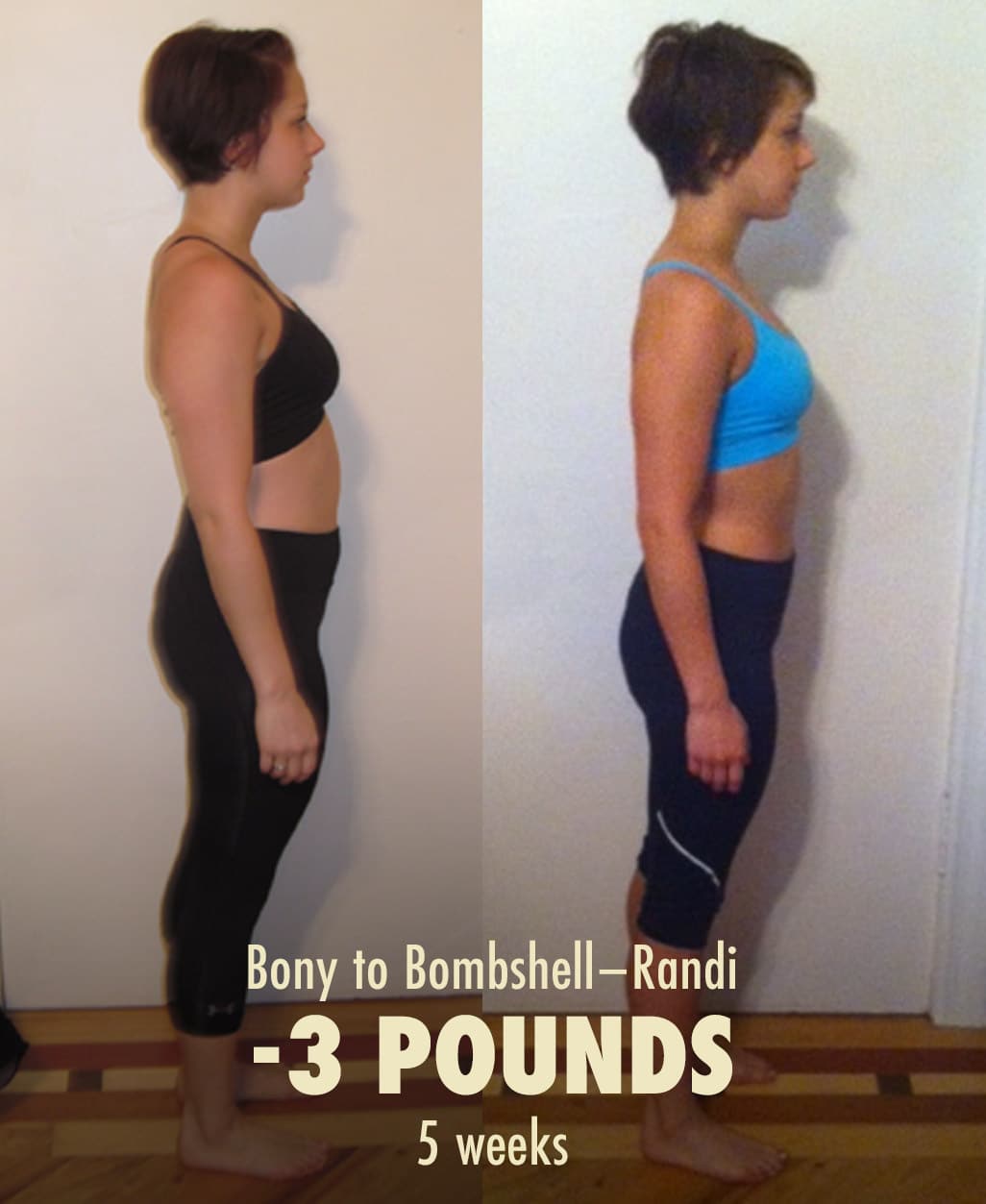
Five weeks might sound unusually fast, but we see the same thing in the research. For example, in one study, participants exercised on a stationary bike for 45 minutes twice per week. After two months, they had lost 18% of their subcutaneous fat and 48% of their visceral fat (study). They cut their visceral fat in half in just eight weeks.
If they had added weight training to that, they would have maintained or gained some muscle, and they would have lost even more fat. Changes can come fast, especially at first.
Diet & Lifestyle
Improving your diet and lifestyle can also shrink your waistline. Eating a healthier diet, getting more sleep, and living a healthier lifestyle also help you store less visceral fat while gaining weight, and burn more visceral fat when losing weight.
I wouldn’t read too much into any one of these studies, but you’ll notice a pattern:
- Cutting back on soda can help reduce visceral fat (study). It seems like the added fructose was the issue. You wouldn’t expect a problem from fruits, but you would expect a problem from drinking too much soda or having too much sugary junk food. The guideline is usually to limit added sugar to less than 10% of your daily calories.
- Eating more polyphenols seems to help burn visceral fat (study). So think of a diet rich in berries, olive oil, fruits, vegetables, nuts, seeds, beans, onions, cocoa, coffee, tea, and herbs and spices.
- Eating more fibre burns visceral fat (study). So again, it would help to eat more fruits, veggies, whole grains, beans, nuts, and seeds.
- Drinking too much alcohol is associated with having proportionally more visceral fat (study). So, if you’re having more than 1–2 drinks per day or more than seven drinks per week, you could try cutting back.
- Sleep restriction can lead to weight gain and visceral fat accumulation (study). I wouldn’t worry too much about unavoidable sleep loss, especially if you’ve got young children. But when you can, it helps to go to bed at about the same time every night, aiming for 7+ hours of sleep per night (guide here).
Improving your diet isn’t as powerful a way to lose visceral fat as exercise, but they complement one another, giving you even better results.
I also think it’s important to eat well when you’re trying to gain weight and build muscle. You’ll build muscle more leanly, and less of the fat you gain will be visceral, meaning you’ll look better and be healthier.
Bulking, Cutting, and Recomping
If you lose weight, you’ll lose fat everywhere, but more of that fat loss will come from your waist, and less will come from your breasts, hips, and thighs. You’ll develop more of an hourglass figure.
If you gain weight, it’s even better. First of all, if you’re following a good bulking program, then almost all of the weight you gain will be muscle, giving you a more athletic hourglass figure. If you gain fat, though, less of it will be stored in your waist, and more of it will be stored in your breasts, hips, and thighs. Again, your body fat storage patterns will shift to give you a more hourglass figure.
If you’re skinny-fat and out of shape, you might not even need to gain or lose weight. If you follow a good program, you can lose fat overall, build muscle, and trim inches off your waistline.
Waist circumference is one of the main measurements we track when we’re helping clients transform their health and bodies. When we’re coaching people through the Bony to Bombshell Program, we look at progress photos, and we look at how their measurements are changing:
When someone is bulking, we want to see most of their measurements growing, but we want the waist to stay fairly small. Aomi is a good example of that:
When someone is cutting, we usually want to see the largest losses coming from the waist (unless they store proportionally more of their fat elsewhere and want to lose it).
When someone is recomping, we want to see strength gains, most measurements growing, and a shrinking waistline (like Erica). That’s the best way to know if a recomp is working.
The Ideal Waist Size
A good target to aim for is a waist circumference (at the narrowest point) that’s 40–50% of your height. If you’re 5’5, that’s 65 inches, so you’d want a waist circumference of 26–32 inches. If you’re 160 cm, you’d want a waist circumference of 64–80 cm. That’s the waist size that offers the best health and longevity benefits, and it also gives that intuitive gut punch of looking impressively fit and healthy (full article).
If you want our help with any of this, check out the Bony to Bombshell Program. We’ll teach you everything you need to build muscle, lose fat, improve your health, and get a smaller waist.
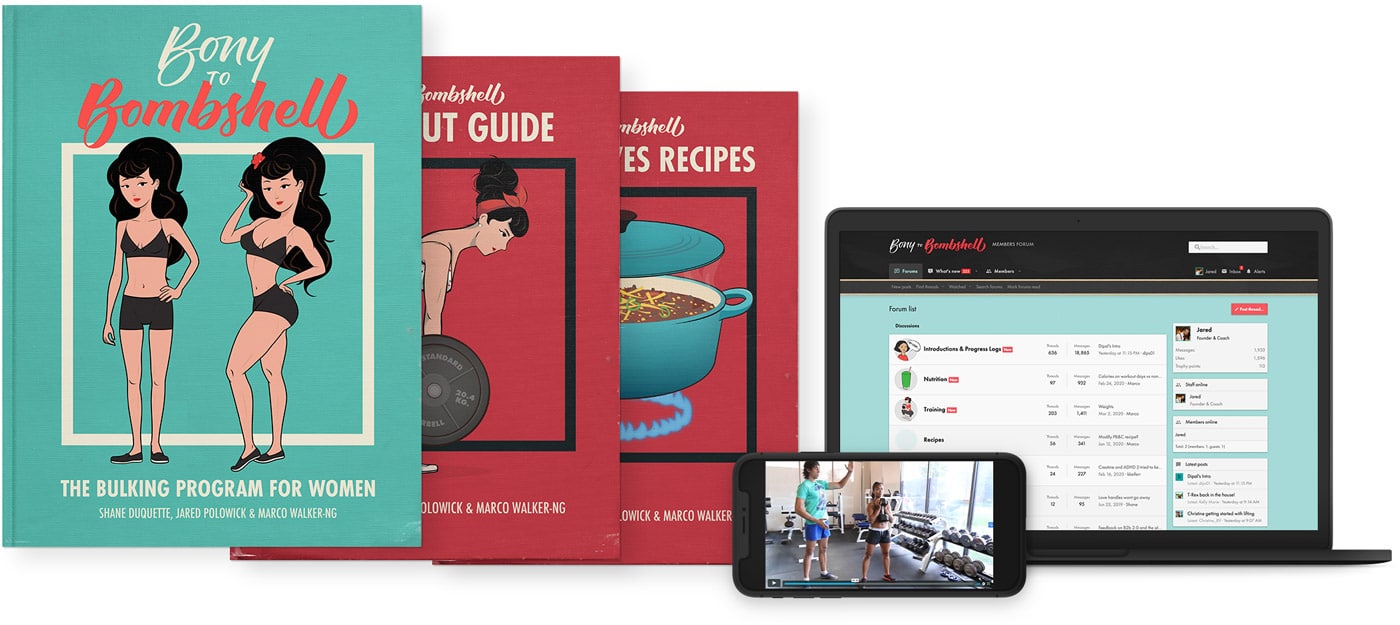
The program includes tutorial videos that teach every exercise, a diet guide, sample meal plans, and a recipe book full of nutritious meals that make it easier to get stronger, healthier, and leaner. It also includes a yearlong membership in our coaching community.
We’ll help you get started on the right path, answer all your questions, and support you through the entire program.
If you don’t love it, return it. No fine print, no hard feelings, just hard muscles.

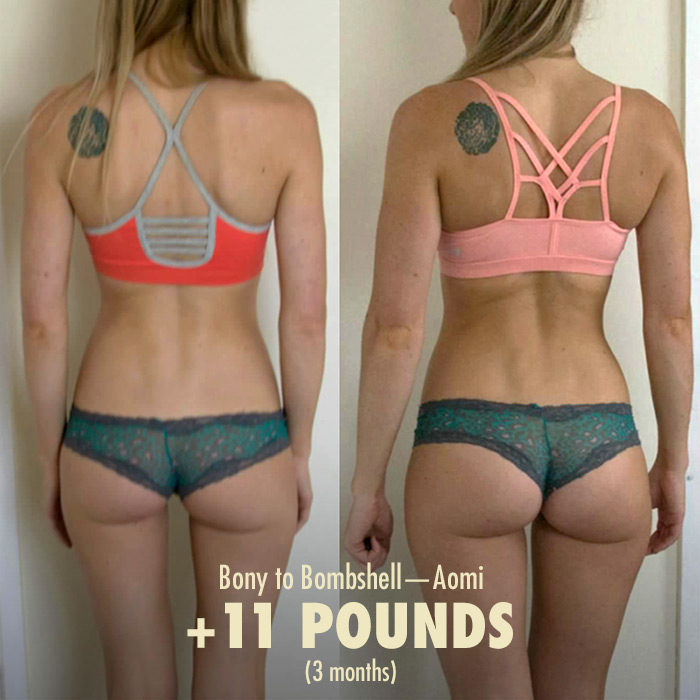
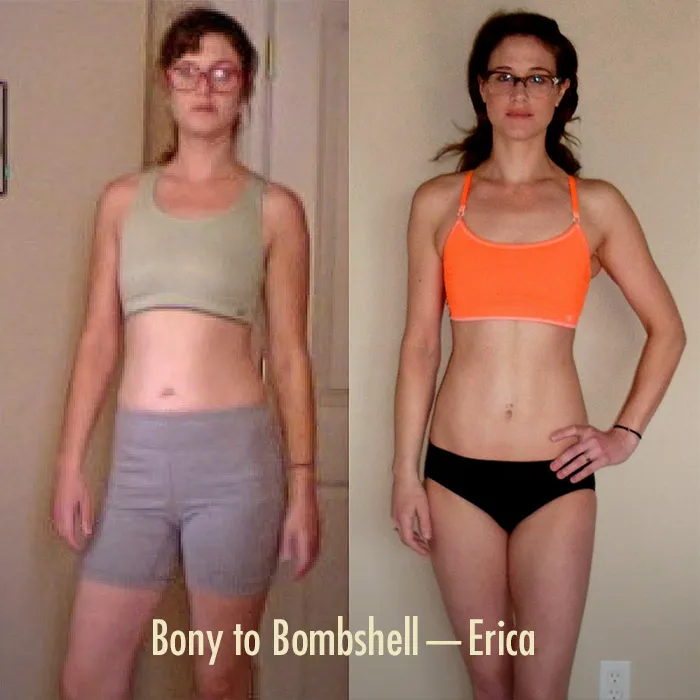


FREE women's Muscle Growth MINI-COURSE
Get our 5-part female bulking mini-course that covers everything you need to know about:
Here are some related articles